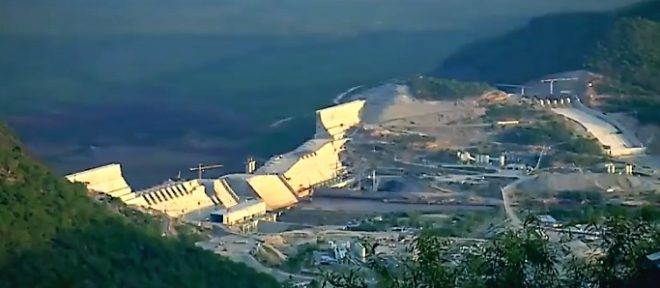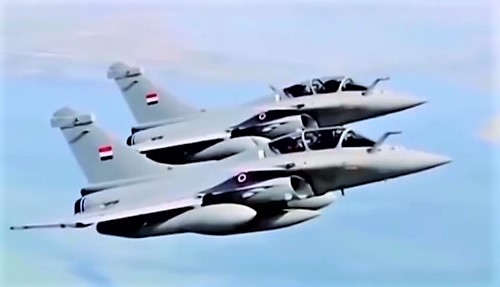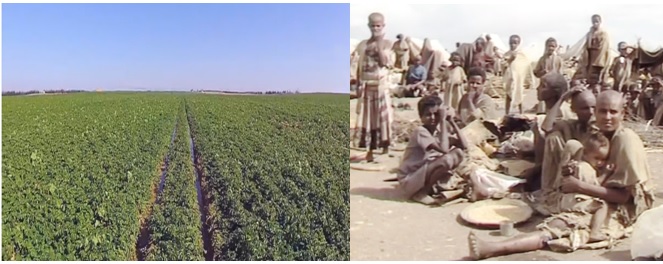Grand Dam: Remembering the Ethiopian Victims of Egypt’s Nile Policy
Opinion
By Fewesegn Abay

In 1875, an ambitious Egypt seeking to expand its empire and control the Abay River (Blue Nile), fought a war with Ethiopia and lost. A second attempt by the Egyptians a year later resulted in a second defeat. Nevertheless, the aspiration of Egypt to somehow control the Nile persisted.
Having suffered militarily, the Egyptians switched their tactics to diplomatic means, namely international agreements. They signed their first one with Great Britain in 1929 and a second agreement with Sudan in 1959. There has been a lot of talk about these agreements and their benefits for Egypt. Most articles written about this issue always use such statement as “Egypt depends on the Nile River for 90% of its water” and Egyptians also argue that “there is a shortage of water in Egypt”. Unfortunately, no one seems to question the validity of either of these statements.
In my article “The Nile is a Shared Resource” I have illustrated that neither of these statements above are true. Egypt is wasting 25 billion cubic meters of water every year. This is about half of the water that Egypt claims it needs from the Nile. I have also indicated that Egypt has other sources of water that are waiting to be utilized.
Since 2011 Ethiopia, Sudan and Egypt have been negotiating over the filling and operation of the Grand Ethiopian Renaissance Dam (GERD), Egypt has been trying to hold the GERD hostage until Ethiopia signs an agreement that validates the exploitative agreements that favor Egypt.
Unfortunately, nobody seems to talk about the victims and potential victims of Egypt’s policy and the exploitative agreements. A lot of Africans have suffered and are still exposed to potential suffering from the exploitative agreements. The major victims are no longer with us and the cause of their pain has been silenced by the barrage of misinformation coming out of Egypt. This article tries to give voice to their pain, suffering and death. Their voice should be heard so their surviving descendants can be protected from starvation and death caused by a policy that is one sided.
Nile Agreements
In 1929 Britain and Egypt, whose military was controlled by Britain, signed an agreement which granted Egypt an annual water allocation of 48 billion cubic meters and Sudan 4 billion cubic meters. Furthermore, the agreement attempted to grant Egypt veto power over construction projects on the Nile River or any of its tributaries in an effort to minimize any interference with the flow of water into the Nile. The agreement didn’t include Ethiopia. Unfortunately, this agreement, combined with Egyptian aspiration to control the Nile, is the source of the problems Ethiopia faced for over 90 years after the agreement was signed.
In 1959 Egypt and Sudan entered into an agreement to share 55.5 and 18.5 billion cubic meters of the Nile waters respectively. Of course this agreement only covers the water that flows into Sudan. Although this agreement gave Egypt and Sudan more water, they do not have control over the water that enters the boundaries of Sudan. This is the second agreement that is the source of the problems Ethiopia faced for over 60 years after the agreement was signed.
Egypt’s Strategy to Control the Nile
Knowing that none of these agreements and treaties gave Egypt control over the Nile, it started planning its long term strategy to control the Nile by using a multiple pronged approach to achieve its goals. On the one hand, Egypt was distributing misinformation to convince the world leaders that it cannot exist without the Nile and that it needs all the water of the Nile to survive. On the other hand, it was busy destabilizing upper riparian countries to slow down their development efforts. Egypt’s misinformation strategy helped it control the narrative and enabled it to block upper riparian countries ability to get funds to implement development projects on the Nile. This effort prevented upper riparian countries from taking measures to lift their population out of poverty.

Although a lot of Egypt’s destabilizing plans were implemented in secret, we have seen how Egypt’s plans have been unfolding over the years. They discussed on live television their plans to use military force to attack Ethiopia including sending special forces to destroy the dam; their support to rebel groups that are fighting the Government of Ethiopia and the list goes on.
The live television discussion happened in the 2010s, but Egypt has been working on the implementation of these ideas for a very long time. Having blocked upper riparian countries’ capability to borrow money to build development dams on the major tributaries of the Nile, Egypt went to work on making it difficult, specifically for Ethiopia to have the capability to fund its own dams. In July 1960, the Eritrean Liberation Front (ELF) was established in Egypt. This liberation front and its splinter group the Eritrean Peoples Liberation Front (EPLF) kept Ethiopia occupied in a civil war that resulted in the breakup of Ethiopia in 1991. Millions of lives were lost during the civil war and Egypt succeeded in preventing Ethiopia from concentrating on development for over 30 years.
The last tool of Egypt was to establish what it called historical rights. Towards this end, Egypt started using as much water as possible out of the Nile, to indicate that it indeed could not survive without the Nile. If used efficiently, only half of the water that Egypt uses today is more than enough to feed its population but this wouldn’t bode well into Egypt’s narrative. Egypt also has alternative sources of water that it could use for its needs, aquifers underground, brackish and salt water along its coasts and of course rain water. For instance the estimated amount of water in the New Valley’s Oasis aquifer, one of its many aquifers, is around 150,000 to 200,000 billion cubic meters. This is equivalent to the 1700 – 2350 years flow of the Nile at Dongola, Sudan.
The Victims
The various direct and proxy wars Egypt imposed on Ethiopia resulted in the death of hundreds of thousands of people. In 1875 Egypt waged a war on Ethiopia in an attempt to annex part of Ethiopia into Egypt. The war didn’t succeed but Egypt tried again in 1876. Fast forward to 1960 the Eritrean Liberation Front, established in Egypt started a war of liberation against the Ethiopian government. This war lasted 30 years and resulted in the death of hundreds of thousands of Ethiopians and Eritreans.

War casualties are not the only victims of Egypt’s Nile policy. In the 1980s, drought & famine forced millions of Ethiopians to leave their homes and walk hundreds of miles searching for food. The landscape they walked on was littered with skeletons. They lost so much weight that one can easily count the bones in their bodies. Some of the kids were too frail to walk and had to be carried by their parents. Few had proper burials while the lucky ones made it to one of the many Ethiopian feeding stations. The rest weathered away in the elements. More than 8 million Ethiopians suffered from the famine and anywhere from 200,000 to 1,200,000 people died of starvation before their ordeal was over.
Although some of you might not think so, this is what really happened to the Ethiopian victims of the unjust Nile agreements. Millions of them perished. They happened to be residing in or near the Nile drainage at the time. Because of their suffering famine and Ethiopia became synonyms. They are the invisible victims caught in Egypt’s Nile policy. Thankfully, the whole world came to the rescue and millions more were saved.
Potential Victims
Although the whole world, including Egypt and the Arab world are well aware of the suffering of the Ethiopians from lack of food and water in the Nile drainage, Egypt is still trying to prevent Ethiopia from using the waters of the Nile. The millions of Ethiopians who died should be a constant reminder of the policy implications at the negotiation table. If Egypt succeeds in its effort to block Ethiopia’s capability to use the Nile waters, Ethiopians in the Nile drainage will, for sure, be victimized as soon as another drought causes a shortage of water in the Ethiopian highlands. Egypt should stop its misinformation campaign and come to the negotiation table in good faith.
All the countries of the world should stop enabling Egypt to victimize another generation of Ethiopians. If they have doubts about the decimation of Ethiopians caused by Egypt’s stand on the Nile, they need only look at the gut wrenching images of those Ethiopians who died of starvation in 1984. The Arab world, instead of blindly supporting Egypt just because they are Arabs, should look at the facts on the ground and advise Egypt to work with upper riparian countries to come up with an agreement that is in the best interest of everyone involved. Millions of Ethiopians dying of drought driven starvation because they can’t use the river that originates in their country, should give them pause when they are discussing the Nile issue. The whole world should remember their ordeal and listen carefully to their voice, urging us to make sure that this doesn’t happen again.
The three countries should sit down at the negotiating table and create agreements that neither one of them will regret either because they didn’t protect their population or because they didn’t take the pain and suffering of the other countries into consideration. Egypt should start saving water by avoiding wasteful usage and start using the many alternative sources at its disposal and share the Nile waters with its African brothers.
Disclaimer: The views & opinions expressed in this article are those of the author and not necessarily represent any official policy or position of Ethiosports. Furthermore, Ethiosports does not make any representation nor is responsible to the accuracy or completeness of any information in this article.



